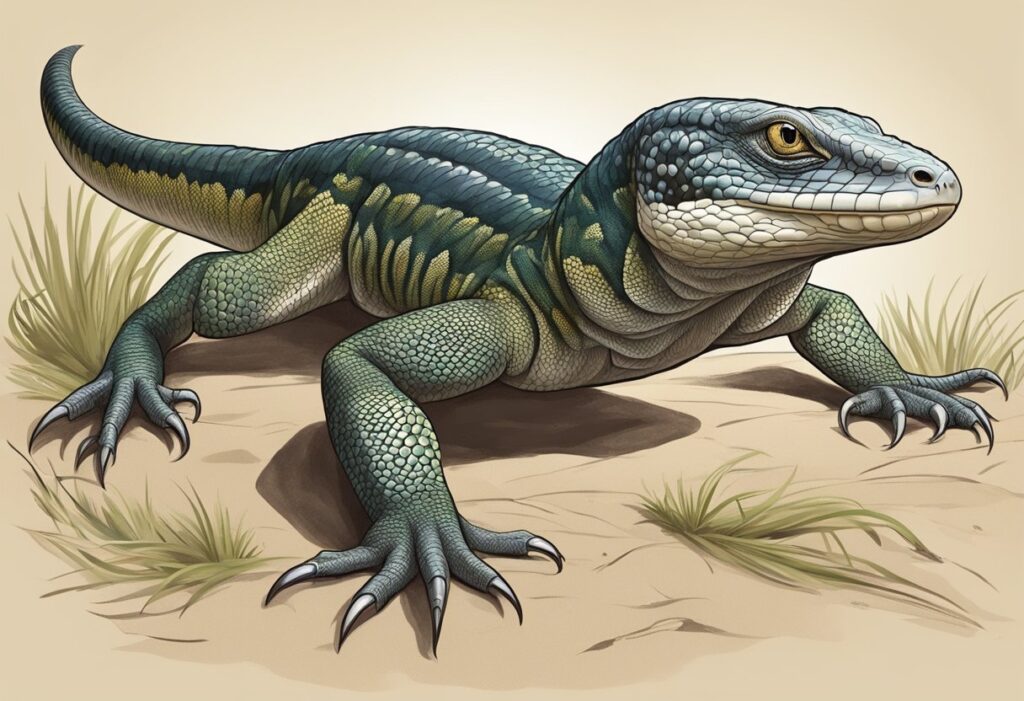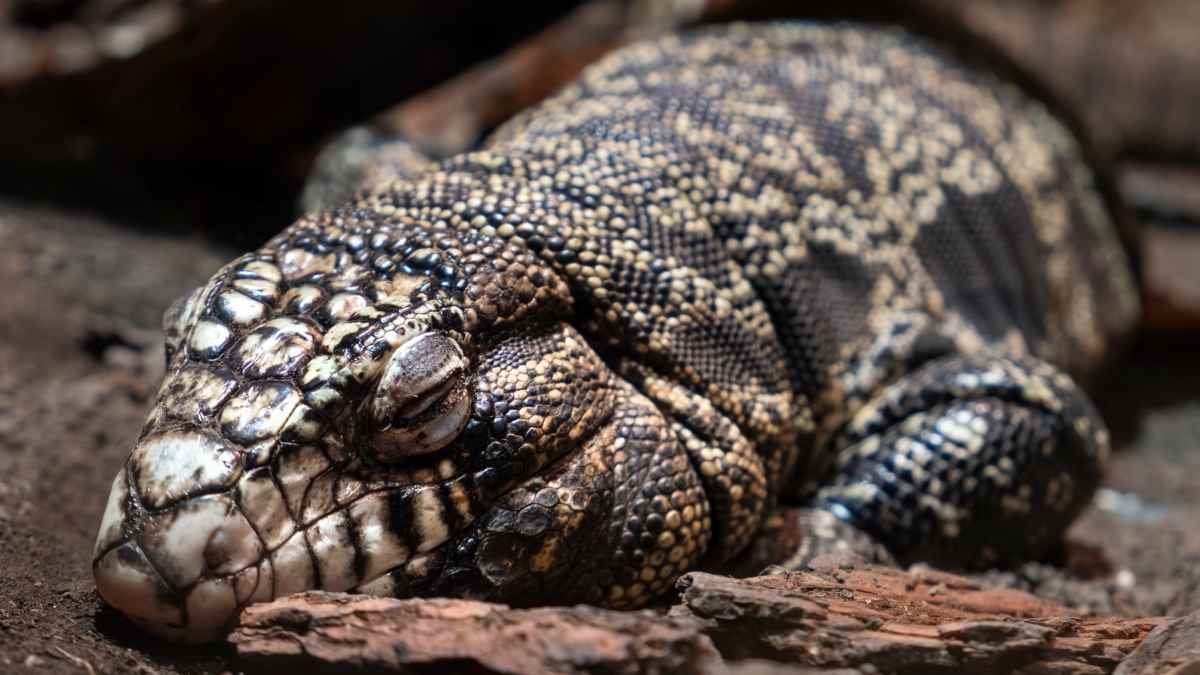If you’re considering getting a pet lizard, you may have come across two popular options: the monitor lizard and the tegu.
While both of these reptiles can make great pets for the right owner, there are some key differences between them that you should be aware of before making your decision.

Monitor lizards are known for their curious and inquisitive nature. They love to explore their surroundings and can be quite active, making them a great choice for owners who want a lizard that they can interact with. However, they can also be quite aggressive if they feel threatened, so it’s important to handle them carefully and provide them with plenty of space.
Tegus, on the other hand, are generally considered to be more docile and “puppy-like” in their behavior. They are often compared to dogs in terms of their personality and can be quite affectionate with their owners. However, they can still be quite large and powerful animals, so it’s important to handle them with care and provide them with plenty of space to move around.
Understanding Monitor Lizards and Tegus
If you’re a reptile enthusiast, you’ve probably heard of monitor lizards and tegus. These two species are often compared due to their similar physical characteristics and intriguing behaviors. Both monitor lizards and tegus belong to the lizard family, but they are from different genera. Monitors belong to the Varanidae family, while tegus belong to the Teiidae family.
Monitor Lizards
Monitor lizards are a diverse group of lizards that belong to the Varanidae family. This family includes the famous Komodo dragons, which are the largest lizards on Earth. Monitors are known for their long necks, powerful jaws, and sharp claws. They are usually larger than tegus, with some species growing up to 7 feet long. Monitors are found in Africa, Asia, and Oceania.
Tegus
Tegus are lizards that belong to the Teiidae family. They are native to South America and are known for their friendly temperament and intelligence. Tegus are smaller than monitors, with the largest species growing up to 4 feet long. They have a distinctive appearance, with a stocky body, short legs, and a long tail. Tegus are also known for their unique coloration, which can range from black and white to red and gold.
Physical Differences
One of the main differences between monitors and tegus is their physical appearance. Monitors have slim, snake-like bodies with long necks, while tegus have stocky bodies and short legs. Monitors also have a distinctive forked tongue that they use to sense their environment, while tegus have a long, broad tongue that they use to capture prey.
-

Beaded Dragon Fan Exclusive: ‘Original Hipster’ T-Shirt – Wear Your Unique Style with Pride – Unisex t-shirt
£13.00 – £20.50 Select options This product has multiple variants. The options may be chosen on the product page -

Chinese Water Dragon Aquatic Mastery Tee: Dive into Elegance with Our Exclusive Reptile Enthusiast Shirt – Unisex t-shirt
£13.00 – £20.50 Select options This product has multiple variants. The options may be chosen on the product page
Behavior
Both monitor lizards and tegus are known for their intelligence and curious nature. However, tegus are generally less aggressive than monitors and are often kept as pets. Monitors can be aggressive if they feel threatened and are not recommended as pets for inexperienced reptile owners.
Conclusion
In summary, monitor lizards and tegus are two impressive reptiles that have captured the attention of reptile enthusiasts around the world. While they share some similarities, they have distinct physical characteristics and behaviors that set them apart. Whether you prefer the sleek appearance of monitors or the friendly temperament of tegus, both species are fascinating creatures that are worth learning more about.
Physical Characteristics and Behavior

When comparing monitor lizards and tegus, it’s important to consider their physical characteristics and behavior. Monitors are generally larger than tegus, with some species growing up to seven feet long. They have a distinctive appearance, with long necks and powerful jaws that allow them to deliver a strong bite. Their body shape is elongated and streamlined, allowing them to move quickly on land and in water.
Tegus, on the other hand, are generally smaller than monitors, with the largest species growing up to four feet long. They have a more rounded body shape and shorter necks, giving them a stockier appearance. Tegus comes in a variety of colorations, including red, black and white, blue, and gold. The Argentine tegu is one of the most popular pet species, known for its docile temperament and striking black-and-white coloration.
In terms of behavior, monitors are known for their inquisitive nature and tendency to “monitor” their surroundings. They can be a bit more wild and aggressive than tegus, especially if they feel threatened. Tegus, on the other hand, are generally considered more docile and puppy-like, making them popular pets.
When it comes to specific species, the red tegu is known for its striking red coloration and can grow up to four feet long. The Chacoan white-headed tegu is another popular pet species known for its friendly temperament and distinctive white head. The crocodile tegu is a large and powerful species that can grow up to six feet long, while the Paraguayan tegu is a smaller species that is popular in the pet trade.
Overall, both monitor lizards and tegus are impressive reptiles with unique physical characteristics and behaviors. Whether you prefer the sleek and powerful appearance of a monitor or the friendly and docile nature of a tegu, both make fascinating pets for experienced reptile owners.
Habitat and Diet
When it comes to habitat, monitor lizards and tegus have different preferences. Monitors can be found in a variety of habitats, including forests, grasslands, deserts, and rainforests. On the other hand, tegus are native to South America and prefer the natural habitats of savannas and forests.
In terms of diet, both monitor lizards and tegus are known to have diverse diets. Monitors are mostly carnivorous and feed on insects, small mammals, and even other reptiles. Tegus, on the other hand, are omnivores and consume a variety of foods, including fruits, vegetables, and meat.
When it comes to feeding your pet monitor or tegu, it’s important to replicate their natural diet as much as possible. For monitors, this means providing a diet that is high in protein and includes a variety of insects and small mammals. For tegus, it’s important to provide a balanced diet that includes both animal and plant-based foods.
Overall, understanding the natural habitat and diet of these lizards is crucial for their health and well-being. By providing a diet that is similar to what they would consume in the wild, you can ensure that your pet monitor or tegu is happy and healthy.
Keeping Monitor Lizards and Tegus as Pets
If you’re considering getting a pet reptile, you might be wondering whether a monitor lizard or a tegu would be the right choice for you. Both of these lizards can make great pets, but there are some differences you should be aware of before making your decision.
When it comes to care requirements, both monitor lizards and tegus need a lot of attention. They require a large enclosure with plenty of space to move around, as well as proper temperature and humidity levels. You should also make sure they have a varied diet that includes both live prey and vegetables.
In terms of health, both monitor lizards and tegus can be prone to certain health issues. It’s important to monitor their behavior and appearance regularly to catch any potential problems early. If you’re unsure about how to care for your pet, it’s always a good idea to consult with a veterinarian who specializes in reptiles.
One major difference between monitor lizards and tegus is their temperament. Monitor lizards can be more aggressive and are known for their venomous bite, while tegus are generally more docile and easier to handle. However, this can vary depending on the individual lizard and their upbringing, so it’s important to do your research and make informed decisions when choosing a pet.
When it comes to the pet trade, both monitor lizards and tegus are popular choices, but it’s important to make sure you’re purchasing from a reputable source. The Colombian tegu is a popular type of tegu, with many different morphs available, but it’s important to make sure you’re getting a healthy animal from a reputable breeder.
In summary, keeping monitor lizards and tegus as pets requires a lot of care and attention but can be a rewarding experience for pet owners who are up for the challenge. Make sure you do your research and make informed decisions to ensure your pet stays healthy and happy. For more information on pet care, visit Pets With Scales, an informational website dedicated to big lizard pet care and other reptiles.

